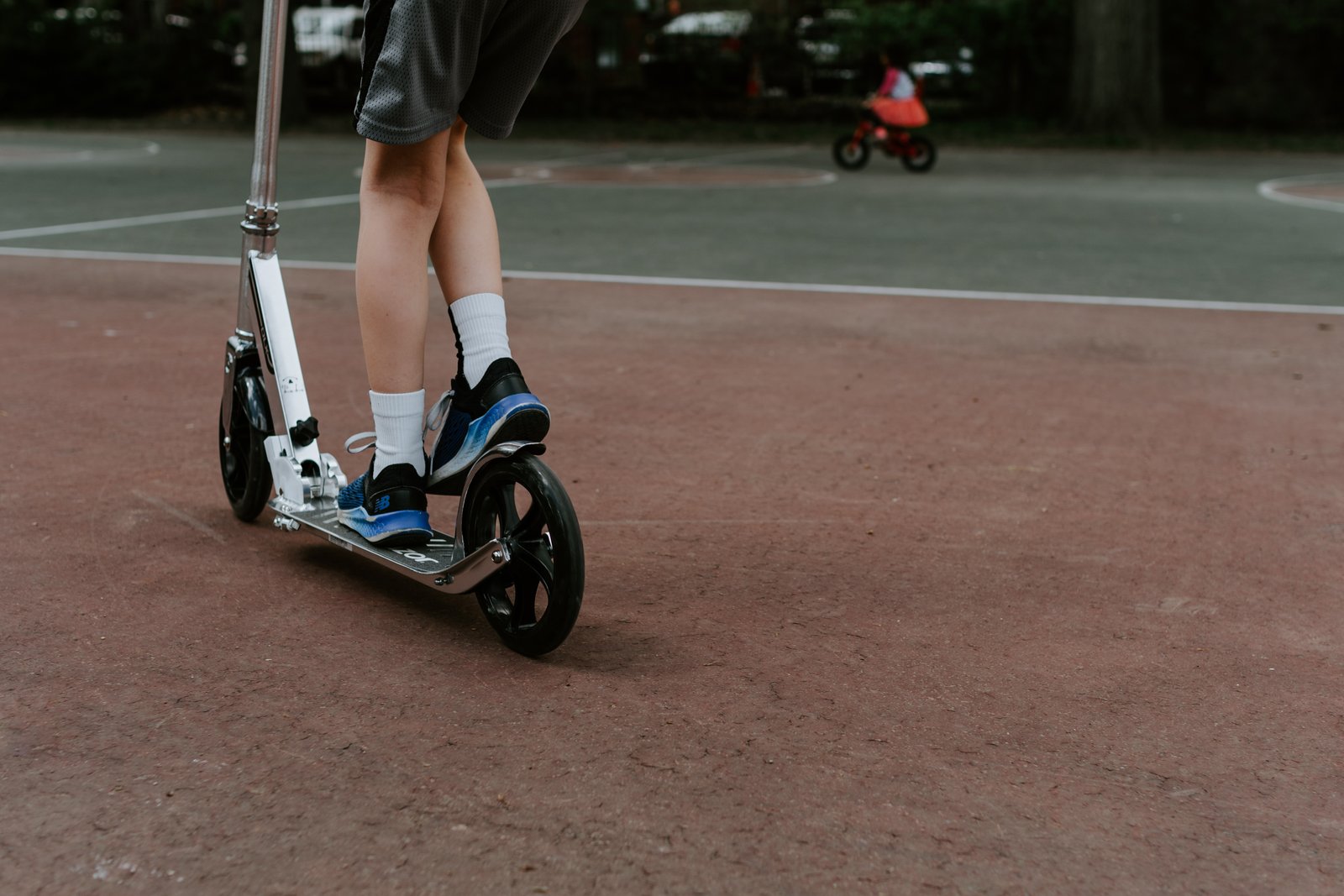What Are The Common Problems With Electric Scooters And How Can I Troubleshoot Them?
ilectric scooters can be a lot of fun to ride, but sometimes they can have problems. It’s important to know what these problems are and how to fix them. In this article, we will talk about the common issues that electric scooters might have and give you some tips on how to troubleshoot them. So, if you’ve got an electric scooter and it’s not working quite right, keep reading to find out how to fix it!

Battery Issues
Scooter not turning on
If your scooter is not turning on, the problem could be with the battery. First, make sure that the battery is properly connected to the scooter. Check if the battery terminals are clean and free from any corrosion. If the connections are secure and clean, the issue might be with the battery itself. Try charging the battery fully and then reinstall it. If the scooter still doesn’t turn on, you may need to replace the battery.
Limited range
If your scooter’s range is not as long as it used to be, the battery might be the culprit. Check if the battery is fully charged. If it is, but the range is still limited, the battery might be losing its capacity over time. Batteries have a limited lifespan, and after a certain number of charge cycles, they can start to lose their ability to hold a charge. In this case, you might need to replace the battery with a new one to get a longer range.
Battery not charging
If you’re having trouble charging your scooter’s battery, there could be a few reasons behind it. First, ensure that the charger is properly connected to both the scooter and the power outlet. Check if the charging port on the scooter is clean and free from any debris. If everything seems to be in order, the issue might be with the charger itself. Try using a different charger to see if that solves the problem. If not, you may need to consult a professional for further assistance.
Battery draining quickly
If your scooter’s battery is draining quickly, there are a few things you can check. First, make sure that there are no unnecessary accessories or lights turned on while riding, as they can consume more power. Additionally, check if the scooter is carrying too much weight, as this can also affect the battery life. If these factors aren’t the cause, the battery might be aging or defective, and it may need to be replaced for optimal performance.
Motor Problems
No power
If your scooter is not producing any power when you attempt to ride it, the issue could be with the motor. Ensure that the scooter is turned on and the throttle is engaged. Check if the motor cables are securely connected and not damaged. If everything appears to be in order, the motor itself might be faulty and require professional repair or replacement.
Strange noises
If you hear strange noises coming from your scooter’s motor, it’s an indication that something is not right. Unusual grinding, squeaking, or rattling sounds can be signs of a motor problem. It’s important to address these noises promptly to prevent further damage. Turn off the scooter and inspect the motor for any visible signs of damage or loose components. If you’re unsure, contact a professional for assistance in diagnosing and repairing the issue.
Motor overheating
If your scooter’s motor becomes excessively hot during use, it can cause performance issues and even potential damage. Overheating can be caused by a variety of factors, such as riding uphill for extended periods, overloading the scooter’s weight capacity, or using the motor continuously without letting it cool down. To avoid motor overheating, give your scooter breaks during extended rides and avoid pushing it beyond its limits. If the motor consistently overheats, it may be a sign of a malfunction or defective component that requires professional attention.
Brake Troubles
Brakes not working
If your scooter’s brakes don’t work properly, they present a serious safety risk. Make sure you adjust the brake cables correctly and ensure they aren’t loose. Examine the brake pads to see if they’re worn out and require replacement. If the brake pads look good and you’ve adjusted the cables correctly, the brake mechanism itself might have an issue. It is crucial to address brake problems immediately by consulting a professional to ensure your safety while riding.
Squeaky brakes
If your scooter’s brakes are making squeaky noises, it’s usually an indication that they need lubrication. Apply a small amount of lubricant to the brake mechanism, being careful not to get any lubricant on the brake pads themselves. Wipe off any excess lubricant, and test the brakes to see if the squeaking has stopped. If the problem persists, there might be an underlying issue that requires professional attention.
Brakes too tight or loose
Properly adjusting the brake tension is essential for optimal performance. If your scooter’s brakes feel too tight or too loose, adjustments can be made. Locate the brake cable adjustment mechanism and tighten or loosen it accordingly. Ensure that the brakes engage smoothly without excessive resistance or being too loose. Test the brakes after each adjustment to ensure they operate effectively. If you’re unsure about adjusting the brakes, consult a professional for assistance.
Tire Related Problems
Flat or punctured tires
If you notice that one or both of your scooter’s tires are flat or punctured, it’s essential to address the issue promptly. Inspect the tires for any visible signs of punctures, such as nails or sharp objects. If you find a puncture, it can be temporarily patched using a tire repair kit, but it’s recommended to replace the tire for a long-term solution. If the tire is simply flat, you can inflate it using a pump or visit a local bike shop for assistance.
Loss of tire pressure
If your scooter’s tires are losing air pressure consistently, there may be an issue with the valve or the tire itself. Check if the valve is leaking by applying soapy water and looking for bubbles. If it’s the valve, you can replace it easily. If the tire is the problem, inspect it for any visible damage or wear. Or if the tire shows signs of significant wear, it may need to be replaced to prevent further pressure loss and ensure a safe ride.
Tire wear or damage
Regularly inspecting your scooter’s tires for wear and damage is crucial for optimal performance and safety. Check for uneven wear patterns, bulges, tears, or worn-out tread. If the tires show signs of significant wear or damage, it’s recommended to replace them. Riding with worn-out or damaged tires can lead to reduced traction, decreased stability, and potential accidents. Always prioritize maintaining the tires in good condition to ensure a safe and enjoyable ride.

Electrical Malfunctions
Lights not working
If your scooter’s lights are not working, it can impact your visibility on the road, especially during nighttime rides. First, check if all the light bulbs are properly inserted and not burnt out. If the bulbs are in good condition, inspect the wiring connections for any loose or disconnected wires. Ensure that the wires are securely connected. If the issue persists, it may require professional diagnosis and repair to address any internal electrical faults.
Faulty switches and controls
If the switches and controls on your scooter are not functioning correctly, it can be frustrating and hinder your ability to operate the scooter safely. Check if the switches and controls are clean and not obstructed by debris. Inspect the wiring connections for any loose or disconnected wires. If everything seems to be in order externally, the issue might lie within the internal components. Seek professional assistance to identify and repair any faulty switches or controls.
Wiring issues
If your scooter is experiencing electrical malfunctions that cannot be attributed to a specific component, there might be underlying wiring issues. Inspect the wiring connections for any loose, disconnected, or damaged wires. If you notice any problems, it’s crucial to consult a professional for repairs. Avoid attempting to fix wiring issues yourself, as improper handling can result in further complications or safety hazards.
Charging Difficulties
Charger not functioning
If your scooter’s charger is not functioning, it can prevent you from charging the battery and using the scooter. First, ensure that the charger is properly connected to the scooter and the power outlet. Check if the charging port on the scooter is clean and free from any debris. If the issue persists, try using a different charger or power outlet to see if that solves the problem. If none of these steps work, it may be necessary to replace the charger.
Charging taking too long
If your scooter’s battery takes an unusually long time to charge, there could be a few reasons behind it. Verify that the charger is providing the correct voltage output for your scooter’s battery. Additionally, check if the battery terminals are clean and free from any corrosion. It’s also essential to ensure that the battery is not overheating during the charging process, as this can lead to longer charging times. If the issue persists, consult a professional for further guidance.
Charger compatibility issues
Not all chargers are compatible with every electric scooter model. If you’re having trouble charging your scooter’s battery, it could be due to compatibility issues between the charger and the scooter. Ensure that the charger you’re using is designed specifically for your scooter’s make and model. Using an incompatible charger can damage the battery or the charging circuitry. If you’re unsure about compatibility, consult the manufacturer or a professional for assistance.

Faulty Display System
Display not working
If the display on your scooter is not working, it can make it challenging to monitor your speed, battery life, or other important information. Check if the display is securely connected to the scooter’s system. If the connections are fine, inspect the display for any visible signs of damage or water intrusion. If the display remains non-functional, it might need to be replaced. Reach out to a professional for further assistance in diagnosing and resolving the issue.
Inaccurate speedometer
If your scooter’s speedometer is not displaying accurate speed readings, it can be inconvenient and potentially unsafe. Test the speedometer by comparing it with a GPS device or a separate speedometer. If the readings are consistently inaccurate, there might be an issue with the speed sensor or the display itself. Contact a professional for proper diagnosis and repair to ensure that your speedometer provides accurate information while riding.
Malfunctioning indicators
If the indicators on your scooter’s display system are not functioning correctly, it can disrupt your ability to effectively signal your intentions while riding. Inspect the display connections for any loose or disconnected wires. Check if the indicator buttons or switches are clean and not obstructed. If the issue persists, it might be due to internal electrical faults that require professional attention. Promptly resolving the problem ensures your safety and compliance with traffic regulations.
Structural Problems
Loose or broken handlebars
If you notice that your scooter’s handlebars are loose or broken, it can compromise your control and stability while riding. Inspect the handlebar connections and tighten them if they are loose. If the handlebars are broken or damaged, it’s crucial to replace them with new ones. Riding with faulty handlebars can lead to accidents and injuries, so always prioritize maintaining a firm and secure grip on the handlebars for a safe ride.
Faulty folding mechanism
If your scooter has a folding mechanism and it’s not functioning properly, it can hinder your ability to fold and unfold the scooter for storage or transportation. Check if there are any obstructions preventing the folding mechanism from operating smoothly. Inspect the locking mechanism for any damage or wear. If you’re unable to fix the folding mechanism, seek professional assistance to ensure that it functions safely and securely.
Cracks or damage to scooter frame
Inspect your scooter’s frame regularly for any cracks, damage, or signs of wear. Cracks or structural damage can compromise the stability and safety of the scooter. If you notice any issues, it’s important to address them promptly. Consult a professional to determine the extent of the damage and to perform any necessary repairs or replacements. Riding with a damaged frame can lead to accidents and injuries, so ensure that the scooter’s structure is in good condition for a safe ride.
Safety Issues
Inconsistent throttle response
If your scooter’s throttle response is inconsistent, it can be concerning and potentially dangerous. Check if the throttle lever or button is clean and not obstructed. Ensure that the throttle cables are properly adjusted and not loose. If everything seems to be in order externally, there might be internal issues with the throttle mechanism or electrical components. Reach out to a professional for proper diagnosis and repair to ensure a safe and reliable throttle response.
Unstable ride
If your scooter feels unstable while riding, it can be a result of various factors. Check if the tires are properly inflated and not worn out. Inspect the suspension system for any visible damage or wear. Ensure that the scooter’s frame is in good condition and not cracked or damaged. If all these factors seem fine, it’s recommended to consult a professional to identify and address any underlying issues that may be causing the instability.
Unreliable brakes
If your scooter’s brakes are unreliable or fail to engage consistently, it poses a significant safety risk. First, ensure that the brake cables are correctly adjusted and not loose. Check if the brake pads are worn-out and need replacement. If the brake pads are in good condition and the cables are adjusted correctly, there might be an issue with the brake mechanism itself. It is crucial to address brake problems immediately by consulting a professional to ensure your safety while riding.
Software or Connectivity Glitches
App connection problems
If your scooter is equipped with a mobile app, but you’re having trouble connecting or controlling the scooter through the app, there might be connectivity issues. Ensure that the app is up to date and compatible with your smartphone’s operating system. Check if the scooter and the mobile device are in range of each other. If the problem persists, reach out to the manufacturer or app support for assistance in troubleshooting and resolving the connectivity issue.
Error messages on display
If your scooter’s display system shows error messages, it can indicate various issues. Refer to the scooter’s user manual or the manufacturer’s website to understand the specific error codes and their meanings. Follow the recommended troubleshooting steps provided. If you’re unable to resolve the issue independently, contact the manufacturer or a professional for further assistance. Resolving error messages ensures the proper functioning and safety of your scooter.
Firmware update failures
If you’re attempting to update your scooter’s firmware but consistently encountering failures, it can be frustrating. Ensure that you’re following the correct update procedure as outlined by the manufacturer. Check if the scooter’s battery is adequately charged before attempting the update. If the firmware update continues to fail, contact the manufacturer or technical support for guidance. They can provide specific instructions or offer alternative solutions to successfully update the firmware.
In conclusion, electric scooters can experience various problems that can affect their performance and safety. By understanding common issues and troubleshooting methods, you can address these problems promptly and ensure a smooth and enjoyable riding experience. Remember to always prioritize safety and consult professionals for assistance when necessary. With proper troubleshooting and maintenance, you can maximize the lifespan and performance of your electric scooter.
